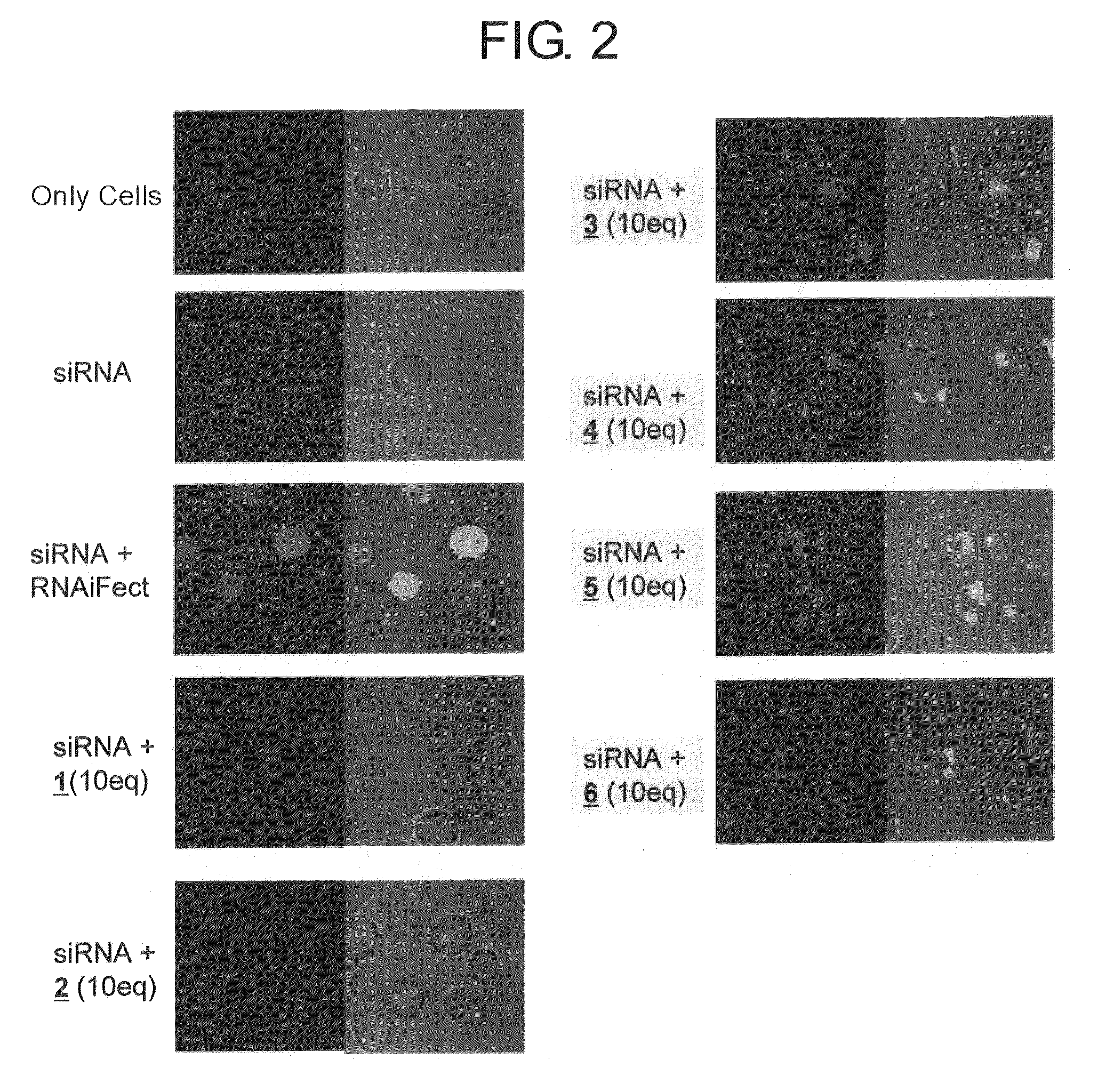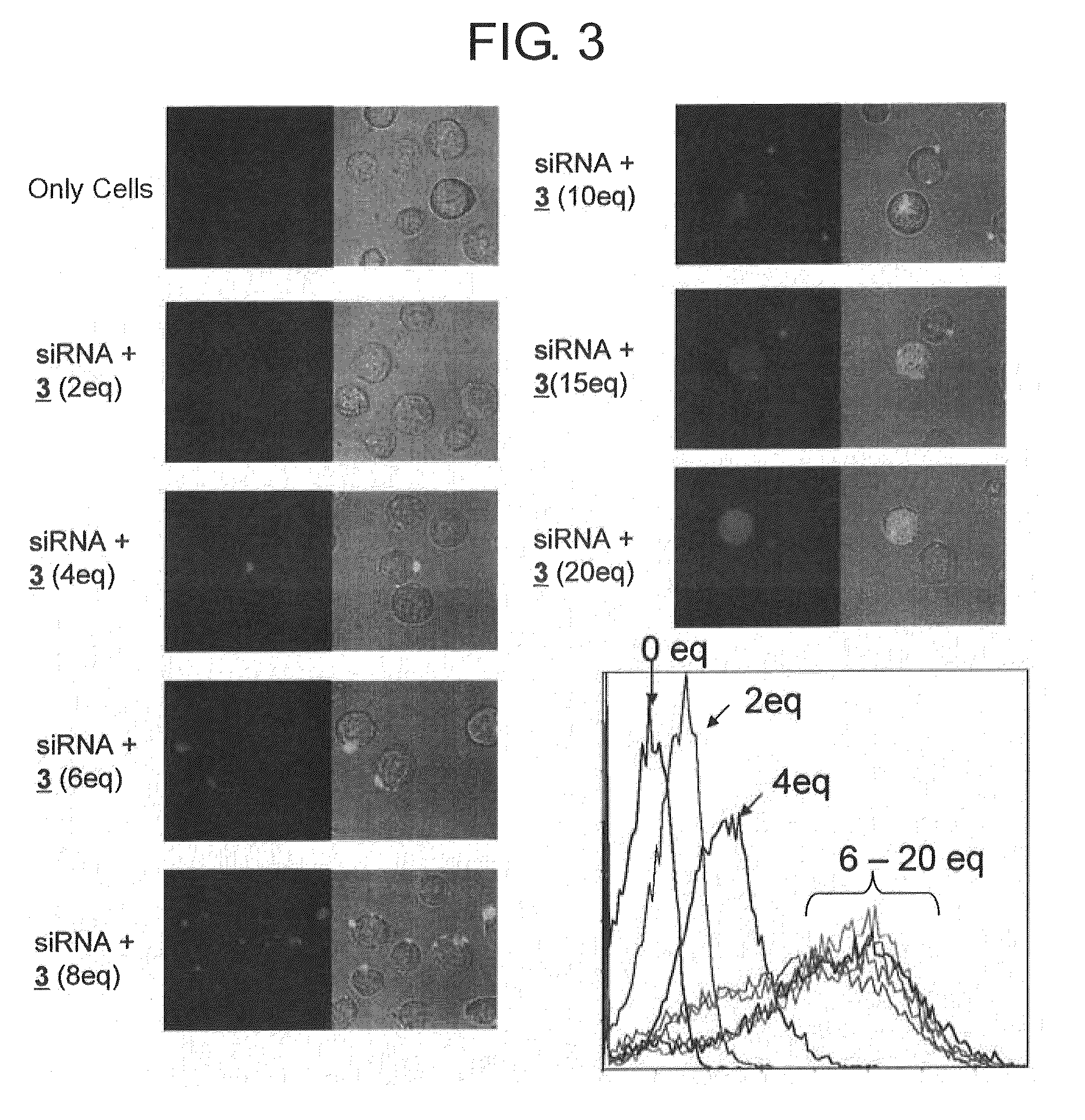Method for transfecting nucleic acid to cell and nucleic acid complex
a nucleic acid complex and nucleic acid technology, applied in the direction of transferases, peptide/protein ingredients, peptide sources, etc., can solve the problems of insufficient conventional methods for transfecting nucleic acid, difficult transfection of poly(oligo)nucleotide including sirnas into cells, etc., to improve the resistance of double-stranded nucleic acid molecule to nuclease, improve the transfection efficiency of double-strand
- Summary
- Abstract
- Description
- Claims
- Application Information
AI Technical Summary
Benefits of technology
Problems solved by technology
Method used
Image
Examples
examples
[0083]Hereinafter, example carried out for confirming the effect of the present invention is described.
Experimental Procedure
(1) Nucleic Acid Carrier
[0084]The nuclear acid carriers used in the example are listed in Table 1 shown below. In Table 1, amino acid sequence is represented using one-letter abbreviation. Also, in Table 1, “—C18” represents the peptide of which N-terminal is modified with octadecyl group, “—Cholic A” represents the peptide in which cholic acid is linked to N-terminal via amide bond, and “Ac—” represents N-acetyl amide.
[0085]For comparing with the nucleic acid carriers listed in Table 1 (entries 1 to 21), RNAiFect™ (Qiagen), a cationic liposome-based nucleic acid carrier was used.
[0086]
TABLE 1SEQ IDEntryAmino acid sequenceNo.1(RL)5142(RL)6153(RL)7164(RL)8175(RL)9186(RL)10197(RL)7-C188(RL)7-Cholic A9(RL)8-C1810Ac-QAKKKKLDK-(RL)7-GK-OH2011Ac-SPQPKKKP-(RL)7-GK-OH2112Ac-RQARRNRRRRWR-(RL)7-GK-OH2213Ac-GPKKKRKV-(RL)7-GK-OH2314Ac-NSAAFEDLRVLS-(RL)7-GK-OH2415Ac-GRKKRR...
PUM
| Property | Measurement | Unit |
|---|---|---|
| temperature | aaaaa | aaaaa |
| molar ratio | aaaaa | aaaaa |
| half life | aaaaa | aaaaa |
Abstract
Description
Claims
Application Information
 Login to View More
Login to View More - R&D
- Intellectual Property
- Life Sciences
- Materials
- Tech Scout
- Unparalleled Data Quality
- Higher Quality Content
- 60% Fewer Hallucinations
Browse by: Latest US Patents, China's latest patents, Technical Efficacy Thesaurus, Application Domain, Technology Topic, Popular Technical Reports.
© 2025 PatSnap. All rights reserved.Legal|Privacy policy|Modern Slavery Act Transparency Statement|Sitemap|About US| Contact US: help@patsnap.com



